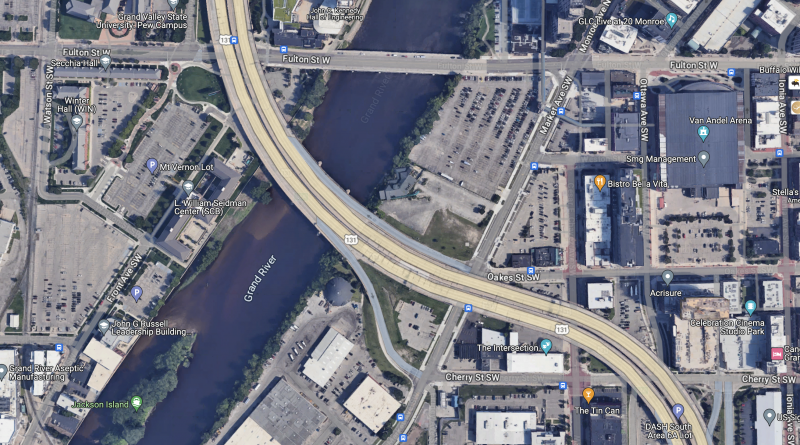If Grand Rapids Can Pass Zoning Reform, Anyone Can Do It.
In late April, the city of Grand Rapids made headlines in urbanist news when they voted unanimously to approve a zoning reform package aimed at encouraging more multifamily development. Wrote Michael Kransz in Mlive, the changes:
“… will remove some city approvals needed for developers to create multi-family housing developments with six or less apartments in those neighborhoods. It will also remove some city approvals needed to build smaller, independent residential dwelling units attached or detached to homes. Other changes eliminate parking requirements for new housing developments in traditional neighborhoods that have six or less units, and another increases the number of unrelated people who can live together in a home or apartment from four to six.”
Zoning reform– making it easier to build multifamily housing- is great. Getting rid of parking minimums is absolutely huge. That last point is significant, too, because it’s illegal in many jurisdictions for more than a certain number of unrelated people to live in the same building. This is often codified into municipal code, although there is even a quite silly Supreme Court case about it from many years ago.

It’s An Interesting Day When Grand Rapids Is Besting Detroit in Urban Innovation.
I’ll be totally honest and admit that until this happened, I spent virtually no time thinking about zoning reform in Grand Rapids. If you’re unfamiliar, Grand Rapids is The Other Big City in Michigan after Detroit. While Detroit once boasted a population of nearly two million, Grand Rapids’ metro area boasts all of 1.3 million, with 200,000 in the city proper. But unlike Detroit, which lost 1.2 million people since 1960, Grand Rapids actually appears to be growing, slowly but surely. Most of my connection to GR urbanism comes from longtime Handbuilt contributor Adam Williams, who himself has worked on incremental development in the city and who has been a great ally in the pro-urbanism Michigan scene.
Or from visiting once every few years. Grand Rapids is a pleasant city. It is clean. It has charming, relatively contiguous neighborhoods with very little in the way of blight that one might see in Detroit, Pontiac, Battle Creek, Muskegon, the list goes on. But while I don’t think of the city as particularly dense– refer, for example, to the aerial photo from Google Maps that shows a huge swath of parking lots in the downtown- the city’s population density is actually the same as Detroit’s, within a few percentage points. In spite of the similar population density, GR has a reputation as being a little bit more functional in terms of municipal governance, although it also has a strong reputation as being far more conservative than Detroit (which itself is quite conservative in its refusal to embrace things like municipal policy reform or investment in public transit, or the fact that the city is dominated by the power and will of an extremely strong evangelical church– quite similar to West Michigan, actually!).
This is owing to the concentration of a wealthy cadre of insane right wingers in the city’s orbit, notably the DeVos and Van Andel fortunes (both built from the Amway pyramid scheme). But Grand Rapids’ zoning reform package means that the city has the ability to think beyond the likes of suburban Republicans– and speaks well to the potential futures that can be glimpsed for Detroit, even if they’re not entirely likely.

Inklings of Reform?
When could Detroit catch up? Ever since the departure of former planning director Maurice Cox, for whom we all had high hopes when he developed a pilot program for Detroit’s first form-based code, it’s been up for debate. Cox’s form-based code pilot, which functioned in a sort of sandbox format in Brush Park as the architecturally smoldering remains of that historic neighborhood were being redeveloped with mid-density ultra-high-end-luxury projects, was expected by many optimists (myself included– yes, I know, no, trust me, I’m actually generally an optimist, believe it or not) to be a springboard for future zoning reform.
But then Cox left the city, likely the product of a strong personality butting heads with a bully like Mike Duggan, who is fairly notorious for utilizing his political power to get whatever he wants and trample anyone who gets in his way. Cox’s replacement, Antoine Bryant, seems like a nice guy. We’ve met a few times and he’s always encouraged me to e-mail or call him any time, maybe we can grab coffee or lunch. He has never returned a phone call or e-mail and, tragically, I have nothing else to say about him, except that my sources at the city tell me that the planning director has surprisingly little to do with zoning reform because of how Detroit’s electoral system allocates municipal power.
Shrug. You don’t say!

It’s my hope that a city like Grand Rapids can lead the way for cities like Detroit or others to do this. Hamtramck, tiny though it is, I recently found out– allows six units by-right on a single-parcel. This is spatially somewhat challenging, but it’s an intriguing value proposition in a city with some truly hideous housing stock, but with a high level of density and thoroughly vibrant commercial corridors (albeit with one-story buildings). I’m imagining a glorious future Hamtramck with four-over-ones on Joseph Campau, Conant, and Holbrook Avenues, and perhaps some infill with 4-plexes.
It can and should happen here.


